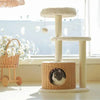Are Tulips Poisonous to Cats? A Scientific Exploration
Tulips are among the most popular ornamental flowers, often admired for their bright colors and elegant structure. However, for cat owners, an important question arises: are tulips poisonous to cats ? According to veterinary toxicology research, the answer is yes. While tulips add beauty to your home or garden, they pose a significant toxic threat to felines. This article delves into the scientific reasons behind tulip toxicity in cats and outlines key symptoms and safety measures for responsible pet ownership.
What Makes Tulips Toxic to Cats?
Tulips belong to the Liliaceae family, which also includes other toxic plants like lilies and hyacinths. The primary toxic compounds present in tulips are called tulipalin A and tulipalin B. These are biochemical allergens and irritants found in the highest concentrations in the bulb of the plant, although all parts — including stems, leaves, and petals — contain some levels of toxins. When ingested by cats, even in small amounts, these toxins can cause a range of adverse biological reactions due to the species' unique metabolic sensitivities.
How Tulipalin Affects the Feline System
Tulipalin compounds interfere with protein synthesis and cellular integrity in cats. Research indicates that these toxic glycosides can disrupt gastrointestinal lining and cellular membranes, leading to symptoms such as vomiting, hypersalivation, and diarrhea. In more severe cases or higher dosages, ingesting tulips can even result in central nervous system depression and convulsions. Compared to other species, cats lack certain detoxifying enzymes in the liver — making them especially vulnerable to tulip toxicity.
Common Clinical Symptoms of Tulip Poisoning
If your cat has come into contact with or ingested part of a tulip plant, you may observe several clinical signs. The most commonly reported symptoms include the following:
- Excessive drooling
- Vomiting or retching
- Diarrhea
- Loss of appetite
- Lethargy or signs of discomfort
In severe cases, especially when bulbs are eaten in large quantities, symptoms can escalate to include cardiac arrhythmias and seizures. If any of these signs are noticed, immediate veterinary attention is critical. Early intervention can significantly improve outcomes by preventing toxin absorption and mitigating internal damage.
Why Cats are Attracted to Tulips
Although cats are obligate carnivores, they often chew on plants like tulips out of curiosity or boredom. Tulip petals and leaves may also appeal to a cat's sense of texture or movement in the air. Some felines engage in what's known as "pica" — a condition characterized by the habitual ingestion of non-food items including plants. This behavior increases their risk of poisoning, especially when toxic plants are present in the home.
Preventive Measures for Cat Owners
To minimize the risk of accidental tulip poisoning, it's essential for cat parents to carefully curate their home and garden environments. Key preventive steps include:
- Avoid planting tulips in accessible areas if you own cats
- Keep freshly cut tulips out of reach, especially during spring seasons
- Opt for pet-safe alternative flowers like marigolds or orchids
- Provide cats with non-toxic houseplants like cat grass to fulfill chewing instincts
Cat owners should also be cautious with flower delivery bouquets, as tulips are a common inclusion. Make sure visitors and florists are aware of your pets, so they can avoid introducing potentially hazardous plants into your home.
What to Do If Your Cat Eats a Tulip
Time is a critical factor in poisoning cases. If you suspect that your cat has ingested any part of a tulip, immediately remove the source and contact your veterinarian or an animal poison control center. Provide information such as the quantity consumed and the specific part of the plant involved. Do not attempt home treatments like inducing vomiting unless instructed by a professional, as this can sometimes do more harm than good.
Veterinary treatment generally involves supportive care such as activated charcoal administration, intravenous fluids, and in some cases, antiemetic or anticonvulsant medication. With prompt attention, most cats recover without long-term effects, although some may require hospitalization if symptoms are severe.
Conclusion: Tulips and Cats Don't Mix
In summary, tulips are toxic to cats due to the presence of tulipalin compounds, which can cause gastrointestinal distress and neurological symptoms. The risk is particularly high in bulb exposures and cannot be underestimated. Responsible pet owners should take proactive steps to ensure a toxin-free environment, especially during seasonal changes when tulips are more prevalent. By understanding the science behind plant toxicity and feline metabolism, we can create safer, healthier homes for our companions.


































